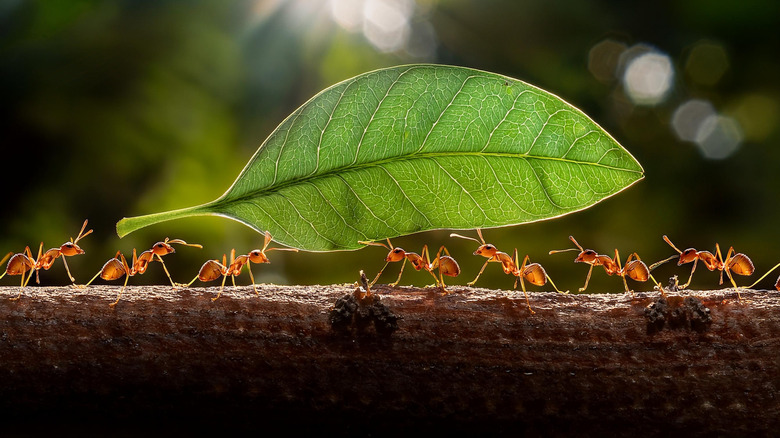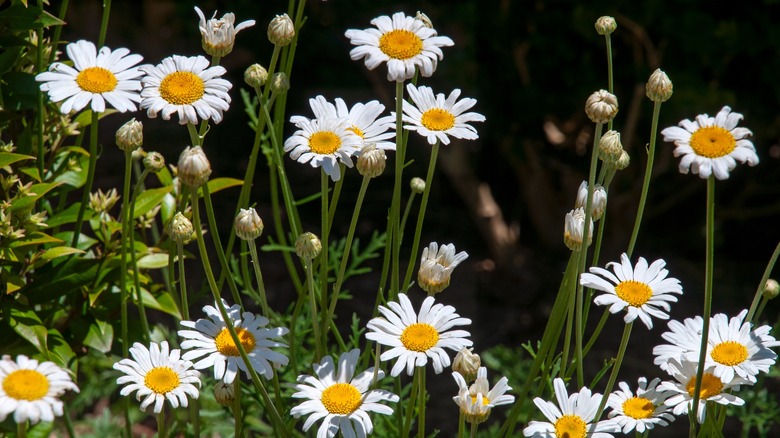The Stunning Flower That'll Keep Ants From Invading Your Home And Garden
Ants love to invade garden spaces and can quickly move from your shrubbery into your home. Once they have made a home in your space, it can be difficult to get rid of them. Prevention is a better route to take to ensure your life is ant-free. Luckily, there's a flower that can serve as a deterrent for these pesky insects and it's one you'll find on many porches to add a bit of color: chrysanthemums. However, not all mums have equal ant-repellent qualities.
The variety Dalmatian pyrethrum (Chrysanthemum cinerariaefolium), which also goes by Dalmatian chrysanthemum, Dalmatian pellitory, and pyrethrum daisy, contains the highest concentration of pyrethrins, a natural mix of chemicals that are toxic to ants. Pyrethrins attack an ant's nervous system, ultimately causing paralysis. As an added benefit, many other common insect pests are also affected by pyrethrins, such as mosquitos, fleas, and flies. However, this type of chrysanthemum is not usually found in typical garden centers or nurseries, so the easiest method of growing Dalmatian pyrethrum in your garden is to purchase the plant or seeds online. If you're not sure where to start, check out the top seed companies that the TikTok gardening community recommends.
What you need to know about Dalmatian pyrethrum
Thankfully, Dalmatian pyrethrum is not too picky about its soil; it actually produces more pyrethrins when it is grown in poor soil and even does well in drought conditions. Always check your hardiness zone before planting. The Dalmatian pyrethrum does best in USDA Hardiness Zones 5 through 9. Plant seeds or plants 6 inches to 1 foot apart for proper spacing in an area of your garden that gets full sun after your last frost date in the spring. This dainty perennial will start to produce flowers in the second year. You should also consider companion planting in your garden to help your chrysanthemum variety thrive.
There are some considerations to know before bringing this type of chrysanthemum into your garden. Due to its pyrethrin content, it is toxic to bees. You may want to consider planting a popular herb that'll keep ants from invading your garden instead. The other issue with this plant is that some people are allergic to the dried flowers. After taking these drawbacks into consideration, weigh the benefits and risks of planting a Dalmatian pyrethrum in your garden to ensure you find the proper balance between pest control and pollinator health.

